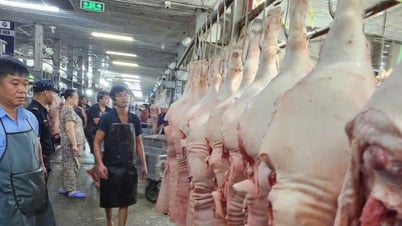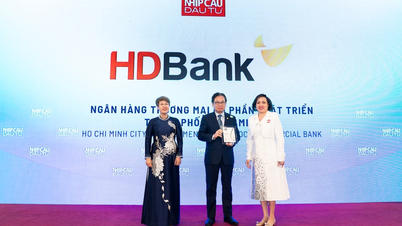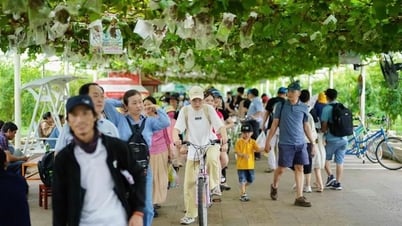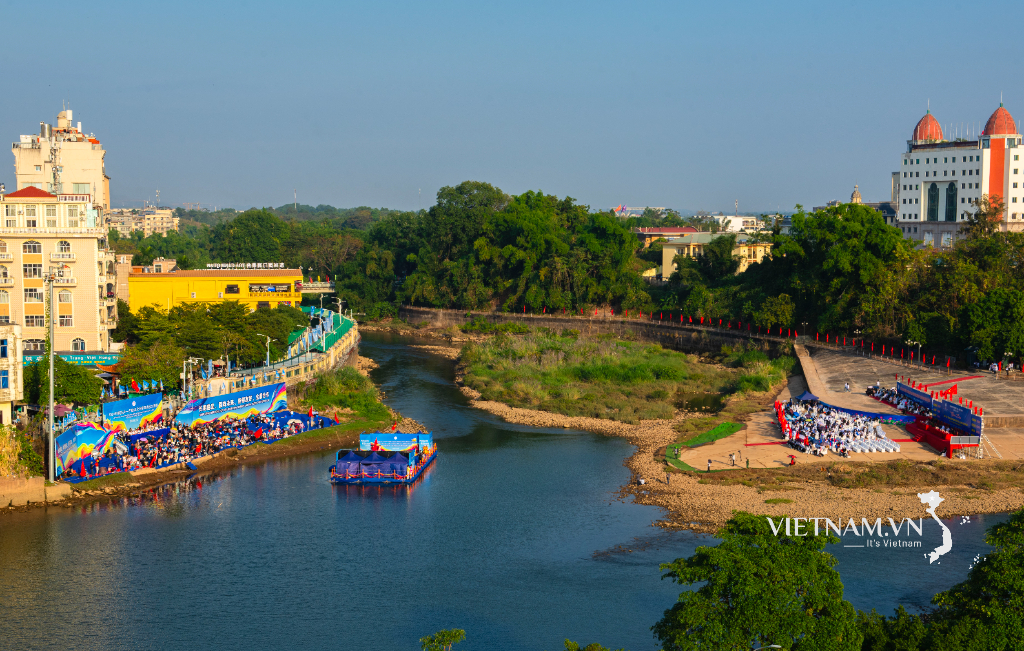Giá chung cư tăng mạnh, cục bộ lên tới 40% theo quý, Hà Nội điều chỉnh kế hoạch sử dụng đất một số dự án tại Quốc Oai, thủ tục chuyển đất trồng hoa màu sang đất thổ cư… là những tin bất động sản (BĐS) mới nhất.
 |
| Bất cập trong cơ cấu sản phẩm bất động sản vẫn là hạn chế lớn của thị trường hiện nay và cũng là một trong những nguyên nhân khiến giá bất động sản tăng lên thời gian qua. (Hình minh họa - Ảnh: Linh An) |
Chung cư từ cũ đến mới tiếp tục tăng giá
Đánh giá về căn hộ chung cư tại Hà Nội, Bộ Xây dựng cho biết, giá tiếp tục tăng ở cả dự án mới và cũ. Đến nay, thị trường đã thiết lập mặt bằng giá dự án mới, tăng khoảng 4-6% theo quý và 22-25% theo năm. Đặc biệt có một số khu vực tăng cục bộ lên khoảng 35-40% tùy từng vị trí so với quý trước.
Khảo sát tại một số dự án như Lumi Prestige (quận Nam Từ Liêm) có giá từ 69 triệu đồng/m2, chung cư thuộc dự án Khai Sơn City (quận Long Biên) có giá từ 50-68 triệu đồng/m2, dự án trên đường Nguyễn Tuân (quận Thanh Xuân) giá khoảng 75-97,2 triệu đồng/m2…
Không chỉ ở Hà Nội, qua tổng hợp cho thấy, trong quý III, giá BĐS tại một số địa phương vẫn có xu hướng tăng, đặc biệt tại Hà Nội, TPHCM và các đô thị lớn.
“Hiện tượng tăng giá có tính cục bộ, xảy ra ở một số khu vực, một số loại hình, một số phân khúc BĐS dẫn đến tác động làm tăng giá chung” Bộ Xây dựng cho biết.
Bất cập trong cơ cấu sản phẩm BĐS vẫn là hạn chế lớn của thị trường hiện nay và cũng là một trong những nguyên nhân khiến giá BĐS tăng lên thời gian qua.
Bộ Xây dựng chỉ ra rằng, sản phẩm nhà ở giá bình dân không đủ nguồn cung cho nhu cầu của thị trường. Trên thị trường phân khúc căn hộ chung cư bình dân (có giá bán dưới 25 triệu đồng/m2) gần như không có giao dịch và sản phẩm để bán.
Căn hộ chung cư trung cấp (25 triệu đồng/m2 đến dưới 50 triệu đồng/m2) vẫn chiếm tỷ trọng cao về giao dịch và nguồn cung trên thị trường. Còn lại là căn hộ chung cư cao cấp, siêu cao cấp (có giá trên 50 triệu đồng/m2).
Lý giải về việc thiếu nguồn cung nhà ở để đáp ứng nhu cầu đại bộ phận người dân, các đối tượng thu nhập thấp, thu nhập trung bình tại các khu vực đô thị, đặc biệt là Hà Nội và TPHCM, Bộ Xây dựng cho rằng có nhiều nguyên nhân.
Trong đó, có việc doanh nghiệp kinh doanh BĐS gặp khó khăn, vướng mắc trong thủ tục pháp lý, đặc biệt là việc xác định giá đất, tính tiền sử dụng đất, giải phóng mặt bằng, giao đất.
Bên cạnh đó, nhiều dự án đã, đang triển khai xây dựng thời gian qua phải tạm dừng, giãn tiến độ, chậm tiến độ triển khai xây dựng.
Cơ quan quản lý đánh giá, các Luật Đất đai 2024, Luật Nhà ở 2023, Luật Kinh doanh BĐS 2023 được ban hành và có hiệu lực thi hành, các vướng mắc khó khăn về thể chế, quy định pháp luật (đất đai, nhà ở, kinh doanh BĐS, tín dụng...) đối với doanh nghiệp đã cơ bản được tháo gỡ, nguồn cung BĐS đã cho thấy có sự cải thiện. Tuy nhiên, vẫn còn một số hạn chế do cần có thời gian để các cơ chế, chính sách, pháp luật mới được ban hành được thực thi có kết quả, “đi vào cuộc sống”.
Nhiều chuyên gia BĐS chỉ rõ vấn đề tăng nguồn cung là ở phân khúc giá bình dân, hợp lý. Bởi thực tế cho thấy, thời gian qua, mặc dù nguồn cung căn hộ tăng lên, song mặt bằng giá bán tại Hà Nội vẫn tiếp tục ghi nhận xu hướng tăng ở cả hai thị trường sơ cấp và thứ cấp.
Ghi nhận của Savills Việt Nam, tại các đô thị lớn như TPHCM và Hà Nội, thị trường nhà ở hiện nay thiếu hụt nguồn cung giá hợp lý khi thị phần phân khúc này đã giảm từ 60% năm 2016 xuống chỉ còn 35% năm 2024, căn hộ sơ cấp dưới 2 tỷ đồng biến mất hoàn toàn.
Lãnh đạo một doanh nghiệp BĐS ở Hà Nội cho biết, các dự án đang triển khai trên thị trường đa phần là trung và cao cấp. Khi cầu cao hơn cung, thì BĐS càng tăng giá. Mức giá bán được đẩy lên cao hơn giá trị thật là chuyện không hiếm.
Theo vị này, khi chưa có nguồn cung nhà giá bình dân, phù hợp thì vấn đề của thị trường BĐS chưa thể được giải quyết.
Điều chỉnh kế hoạch sử dụng đất một số dự án tại Quốc Oai, Hà Nội
UBND thành phố Hà Nội vừa ban hành Quyết định số 5682/QĐ-UBND về việc điều chỉnh, bổ sung Kế hoạch sử dụng đất năm 2024 huyện Quốc Oai.
Theo đó, điều chỉnh, bổ sung danh mục Kế hoạch sử dụng đất năm 2024 huyện Quốc Oai đã được UBND Thành phố phê duyệt tại Quyết định số 418/QĐ-UBND ngày 22/1/2024, Quyết định số 2015/QĐ-UBND ngày 16/4/2024, Quyết định số 3848/QĐ-UBND ngày 25/7/2024.
Cụ thể, điều chỉnh, bổ sung (địa danh, diện tích) các dự án đã được xác định tại Quyết định 418/QĐ-UBND ngày 22/01/2024, Quyết định số 2015/QĐ-UBND ngày 19/4/2024, Quyết định số 3848/QĐ-UBND ngày 25/7/2024 là 1 dự án.
Bổ sung Kế hoạch sử dụng đất năm 2024 huyện Quốc Oai 9 dự án gồm: Dự án Xây dựng các tuyến đường giao thông khu vực tiếp cận Bệnh viện Phụ sản Trung ương cơ sở 2; Bệnh viện Nhi Trung ương cơ sở 2; Dự án Xây dựng trung tâm văn hóa xã Ngọc Liệp; Trường Mầm non Ngọc Mỹ A; xây dựng nhà văn hóa thôn Phú Hạng xã Tân Phú; xây dựng tuyến đường dây 220kV cấp điện cho trạm biến áp 220/110kV Hòa Lạc và các đường dây 110kV xuất tuyến; Trung tâm phát tín; Xây dựng kho dự trữ cấp phát tổng hợp, Kho dự trữ xăng dầu phía Bắc và Đoàn xe I thuộc Cục Trang bị và kho vận; Mở rộng trạm biến áp 500kV Tây Hà Nội phục vụ lắp đặt 06 ngăn lộ 220kV, xã Đồng Quang; Trường Tiểu học Phượng Cách với tổng diện tích 74,18ha.
Điều chỉnh số dự án và diện tích tại Quyết định số 3848/QĐ-UBND ngày 25/7/2024 thành 148 dự án với tổng diện tích 1.151,27ha.
TPHCM ban hành quy định mới về diện tích tối thiểu được tách thửa
Ngày 31/10, UBND TPHCM ban hành quyết định số 100/2024 quy định điều kiện tách thửa, hợp thửa và diện tích tối thiểu được tách thửa đối với từng loại đất trên địa bàn.
Quyết định này thay thế quyết định số 60/2017 về diện tích tối thiểu được tách thửa trước đó.
Về diện tích tối thiểu được tách thửa, theo quy định mới, đất ở trên địa bàn được chia làm 3 khu vực, tương ứng diện tích tối thiểu 36m2, 50m2 và 80m2.
Cụ thể, khu vực 1 gồm các quận 1, 3, 4, 5, 6, 8, 10, 11, Gò Vấp, Bình Thạnh, Phú Nhuận, Tân Bình và Tân Phú. Diện tích đất ở tối thiểu tách thửa tại các quận này là 36m2, chiều rộng mặt tiền và chiều sâu thửa đất không nhỏ hơn 3m.
Khu vực 2 gồm quận 7, 12, Bình Tân, TP Thủ Đức và thị trần của các huyện. Diện tích đất ở tối thiểu được tách thửa tại những nơi này là 50m2. Trong đó, quy định chiều rộng mặt tiền và chiều sâu thửa đất không nhỏ hơn 4m.
Khu vực 3 gồm các nơi ngoại trừ thị trấn của các huyện Bình Chánh, Củ Chi, Hóc Môn, Nhà Bè và Cần Giờ. Diện tích đất ở tối thiểu được tách thửa tại những nơi này là 80m2. Chiều rộng mặt tiền và chiều sâu thửa đất không nhỏ hơn 5m.
Về đất nông nghiệp, TPHCM quy định diện tích tối thiểu được tách thửa đối với đất trồng cây hằng năm và đất nông nghiệp khác là 500m2.
Trong khi đó, đất trồng cây lâu năm, đất nuôi trồng thuỷ sản, đất làm muối, đất chăn nuôi tập trung thì diện tích tối thiểu được tách thửa là 1.000m2.
So với quyết định cũ, diện tích đất ở và đất nông nghiệp tối thiểu được tách thửa tại TPHCM không có sự thay đổi.
Điểm mới của quy định tách thửa là không còn quy định về điều kiện quy hoạch và điều kiện xây dựng như trước đây.
Cụ thể, đất tách thửa, hợp thửa phải đảm bảo các yêu cầu như: Phải có lối đi, kết nối với đường giao thông hiện hữu, đảm bảo cấp - thoát nước và nhu cầu cần thiết khác một cách hợp lý.
Nếu người sử dụng đất dành một phần thửa đất có đất ở hoặc thửa đất có đất ở và đất khác trong cùng thửa để làm lối đi, khi tách thửa hoặc hợp thửa thì không cần chuyển mục đích sử dụng đối với diện tích đất làm lối đi.
Trường hợp người sử dụng đất dành một phần thửa đất làm lối đi thì lối đi này sẽ do các bên tự thoả thuận và chính quyền địa phương sẽ căn cứ tình hình thực tế để có ý kiến chấp thuận trước khi tách hoặc hợp thửa.
Về diện tích đất được xác định làm lối đi, sử dụng cho nhiều thửa đất thì được chuyển sang hình thức sử dụng chung trên giấy chứng nhận.
Thủ tục chuyển đất trồng hoa màu sang đất thổ cư
Khi người dân chuyển đất trồng hoa màu sang đất thổ cư phải chuẩn bị hồ sơ để nộp cho cơ quan Nhà nước có thẩm quyền theo quy định tại Điều 227 Luật Đất đai 2024.
Khi nào được chuyển đất trồng hoa màu sang đất thổ cư?
Căn cứ Điều 116 và điểm b khoản 1 Điều 121 Luật Đất đai 2024, người sử dụng đất chỉ được chuyển đất trồng hoa màu sang đất ở nếu được cơ quan Nhà nước có thẩm quyền đồng ý. Nói cách khác, phải có quyết định cho phép chuyển mục đích sử dụng đất theo quy định.
Để có quyết định cho phép chuyển mục đích sử dụng đất của cơ quan Nhà nước có thẩm quyền cần căn cứ vào quy hoạch sử dụng đất cấp huyện hoặc quy hoạch chung hoặc quy hoạch phân khu theo quy định của pháp luật về quy hoạch đô thị đã được cơ quan có thẩm quyền phê duyệt.
Thủ tục chuyển đất màu sang đất thổ cư
Theo quy định tại Điều 227 Luật Đất đai 2024, trình tự, thủ tục chuyển mục đích sử dụng đất được thực hiện như sau:
Bước 1. Nộp hồ sơ đề nghị chuyển mục đích sử dụng đất theo quy định.
Bước 2. Cơ quan có thẩm quyền kiểm tra các điều kiện chuyển mục đích sử dụng đất. Trường hợp hồ sơ chưa bảo đảm thì người sử dụng đất bổ sung hồ sơ và nộp lại cho cơ quan quản lý đất đai.
Bước 3. Sau khi nộp đầy đủ hồ sơ, cơ quan có chức năng quản lý đất đai lập hồ sơ trình UBND cấp huyện ban hành quyết định cho phép chuyển mục đích sử dụng đất.
Bước 4. Nộp tiền sử dụng đất theo quy định, trừ trường hợp được miễn.
Bước 5. Chuyển hồ sơ đến Văn phòng/chi nhánh Văn phòng đăng ký đất đai để thực hiện việc đăng ký, cấp Sổ, đồng thời cập nhật, chỉnh lý cơ sở dữ liệu đất đai, hồ sơ địa chính và trả lại Sổ cho người sử dụng đất.
Trường hợp vừa chuyển quyền sử dụng, vừa chuyển mục đích sử dụng thì sẽ thực hiện thủ tục đăng ký chuyển quyền sử dụng đất đồng thời với thủ tục chuyển mục đích sử dụng đất theo quy định.
Nguồn: https://baoquocte.vn/bat-dong-san-moi-nhat-chung-cu-tu-cu-den-moi-lien-tuc-tang-gia-thiet-lap-mat-bang-moi-tphcm-quy-dinh-ve-dien-tich-toi-thieu-duoc-tach-thua-292238.html











































































































Bình luận (0)